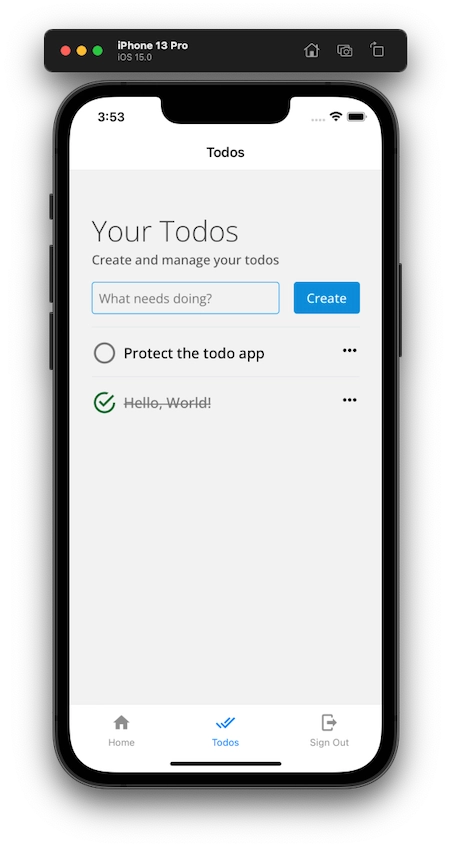Authentication journey tutorial for a React Native app
This tutorial covers the basics of running a protected mobile app with React Native.
Ping Identity does not provide a React Native version of the Ping SDK. Instead we present this example of "bridge code" for connecting the Ping SDK for Android and iOS to the React Native layer.
This guide covers how to implement the following application features using the Ping SDKs:
-
Authentication through a simple journey/tree.
-
Requesting OAuth/OIDC tokens.
-
Requesting user information.
-
Logging a user out.

Figure 1. The to-do sample app